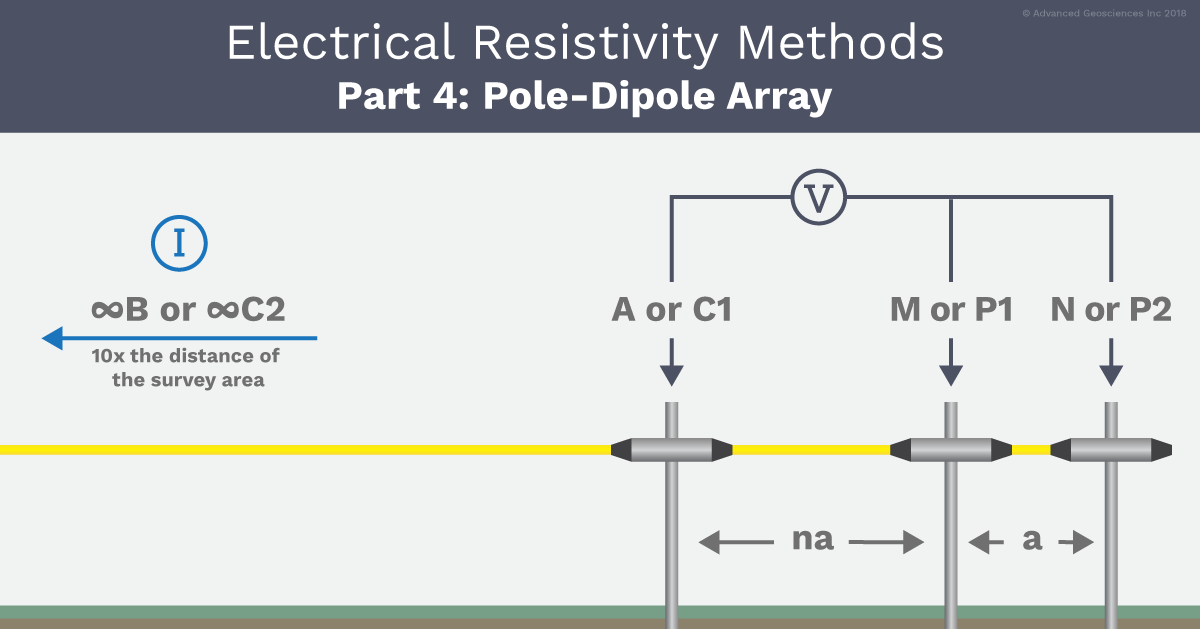
Electrode arrays are different arrangements of electrodes used to perform geophysical resistivity measurements. Electrode arrays were developed in order to make field measurements more efficient and data interpretation easier.
Today, we’re discussing the pole-dipole array—this is the fourth article in our series exploring 11 electrode arrays and methods. We’ve also covered the following:
What is the pole-dipole array?
A pole is a single transmitting electrode, and a dipole is a pair of oppositely charged electrodes that are so close together that the electric field seems to be a single electrode field instead of fields from two different electric poles.
The pole-dipole array is similar to the dipole-dipole array, but the pole-dipole array is used when the surveyor needs to see deep within a cross section of the earth. The achievable depth is based entirely on the distance between the two electrodes (the dipole and the pole). The dipole-dipole array, on the other hand, is used to provide a very detailed image of a cross section of the earth—but will lose signal if the dipoles are placed too far apart. Like the dipole-dipole array, the pole-dipole array is most often used for mineral and ore exploration.

Using The Pole-Dipole Array With Modern Resistivity & IP Scanning Instruments
When conducting a survey using the pole-dipole array, the transmitting remote electrode is moved to infinity. In other words, the transmitter remote electrode should be so far away from the receiver dipole that the instrument doesn’t sense the effect of the remote (pole) electrode, which is often 10 times the distance of the survey area. The reason for this is that the distance between the two electrodes determines the depth of electrical penetration—and explains why the pole-dipole array is popular when you need to look deep into the earth.
This is a critical element because if the remote electrode isn’t far enough away from the dipole, the electrical current from the dipole to the pole will create a concentric circle of electricity (so long as the ground is homogeneous). If there is a geologic deviation in the ground, placing the remote electrode too close to the dipole will create a deviation in this concentric circle—but will still distort the measurements.
When correctly configured, you move the potential electrodes (the dipole) to a position near the current electrode (the pole), and take a reading. Then you move the dipole one step forward, and take another reading. You continue this until you begin losing signal between the current and the potential electrodes.
Keep in mind that modern equipment and software allows you to perform multiple arrays at one time. You could use the SuperSting instrument to perform a pole-dipole array.
Questions about the pole-dipole array?
We’ll be happy to respond to any comments or questions you have about the pole-dipole array or any other arrays. Simply fill out the form on this page, and we’ll be in touch.

